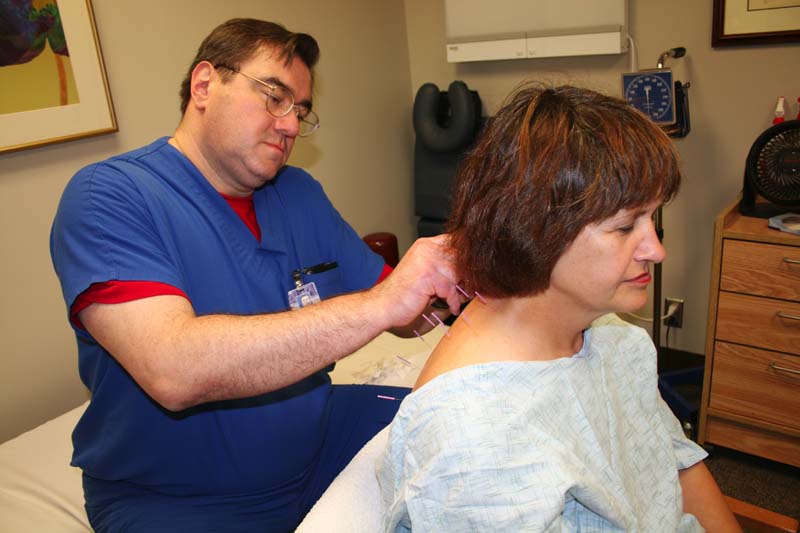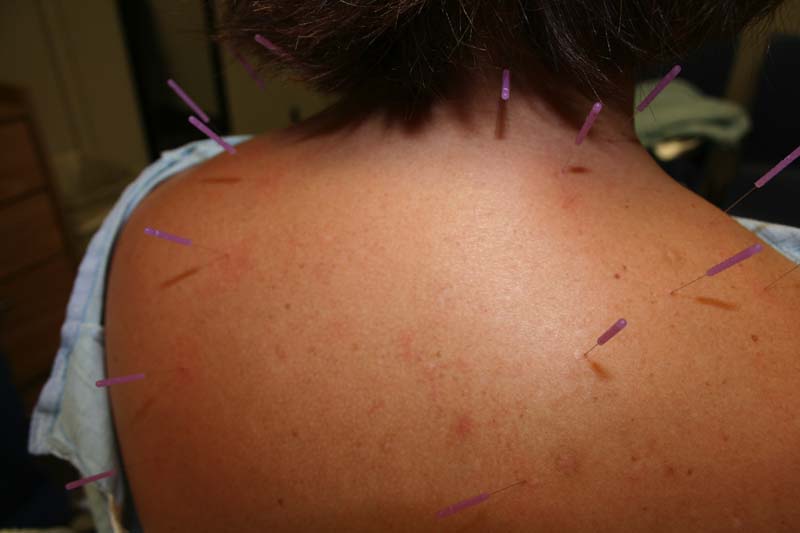FLOWOOD – Harriet Lamkin used to be needle-phobic.
“When I would go in for bloodwork, I was petrified,” said the Braxton resident.
But today she sits blithely by as Dr. Kenneth Fox skewers her upper back with 17, inch and a half long needles.
Such is the soothing power of acupuncture.
“It makes you feel so good,” she said. “I think if more people did acupuncture, they wouldn’t have to take so many pain medications.”
Long a staple of Oriental medicine, acupuncture is achieving more mainstream acceptance in the United States. A 2002 National Health Interview Survey found an estimated 8.2 million U.S. adults had tried acupuncture. And the U.S. National Institutes of Health website lists some 67 clinical trails for the alternative therapy.
Still, Lamkin was suspicious of the practice at first. “To quote a country song, I thought it was hogwash,” she said.
But after three surgeries brought no relief from almost 30 years of back pain, Lamkin was desperate. So she followed a friend’s advice and made an appointment with Dr. Fox, a rehabilitation medicine physician at Methodist Spine & Joint Center in Flowood.
Dr. Fox hails from New York, where acupuncturists are as common as Chinese take-out. But in Mississippi, practitioners are more like the proverbial needle in a haystack – hard to find because only physicians are allowed to do acupuncture in the state.
After finishing 300 hours of training at New York Medical College, Dr. Fox became a certified acupuncturist in 2000. He has since found the therapy to be an effective adjunct to his arsenal of pain relief strategies.
A typical acupuncture session involves inserting fine needles of varying sizes into the body at specific points to treat a variety of conditions. “The variables are where to put the needles, what type needles to use and whether to add electrical stimulation,” Dr. Fox said. “Studies show they need to be in at least 12 to 14 minutes.”
Dr. Fox says acupuncture causes physiological responses at the level of the spinal cord and the brain and seems to work by more than one mechanism. “Like many therapies in pain medicine, we can’t explain how it works,” he said. “We know it’s not a placebo effect because it works on animals and children. And it’s not simply a response to endorphins, because if you block endorphin release, it doesn’t block total response.”
The therapy has been used for everything from constipation to infertility, but Dr. Fox limits his practice to two conditions – pain and insomnia.
“It makes you so much calmer, and I wanted to go back just based on that,” Lamkin said. “I could tell after three or four visits it was really going to help.”
A year after starting acupuncture, Lamkin said she no longer needs any pain medicine for her back. “I tell you, it’s life-changing,” said the woman who now recommends the therapy even to other needle-phobics. “A lot of people say they don’t do needles. But if I can do needles, anybody can.”
###
Acupuncture for pain relief or insomnia is available at Methodist Spine & Joint Center in Flowood and may be covered by some insurance plans. For more information, call 601-936-8801.


